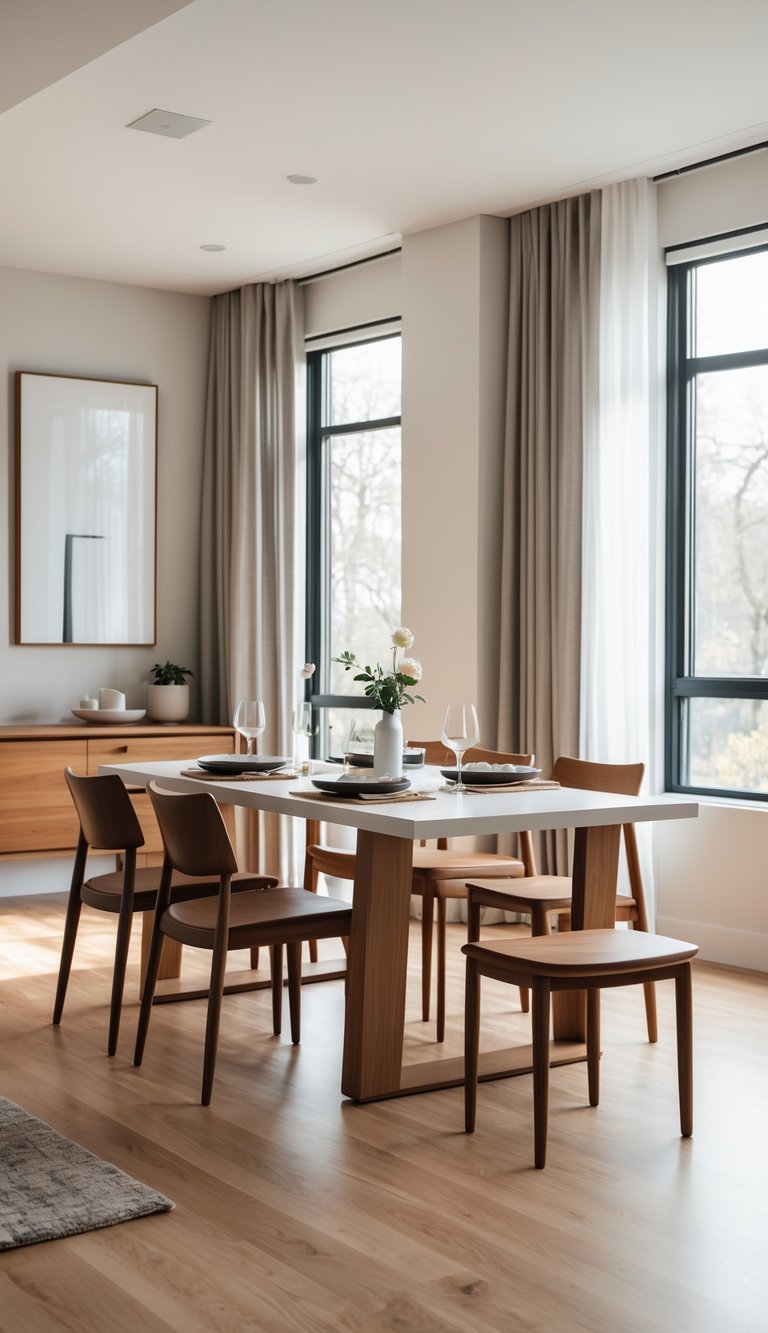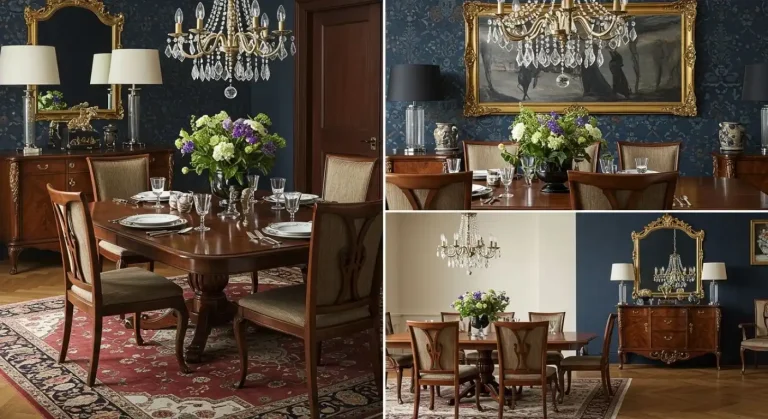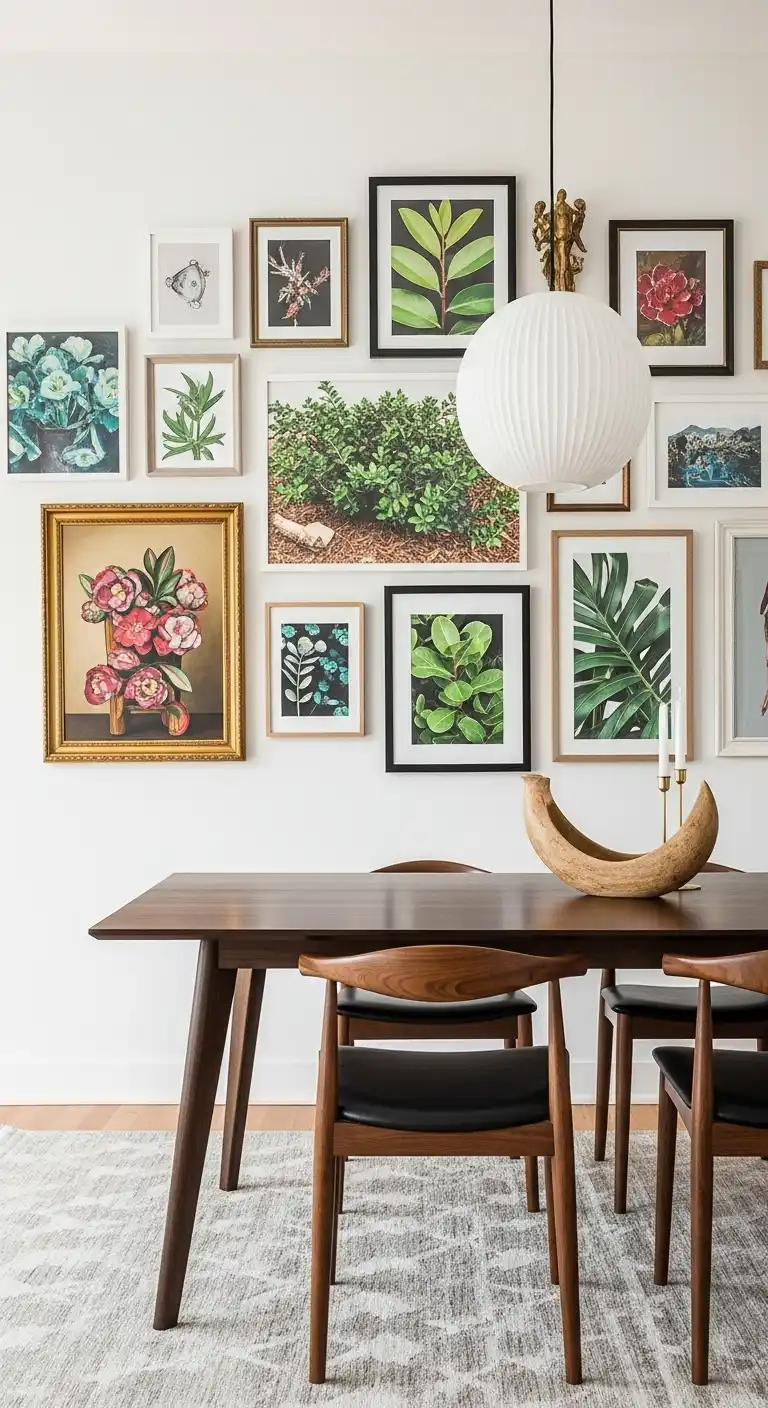Are Round Rugs Good for Dining Room? Tips, Styles, Inspiration
Round rugs can be an excellent choice for dining rooms, especially with round tables or small spaces. They create visual balance, define the dining area, and add softness, while complementing various décor styles when sized and placed correctly.
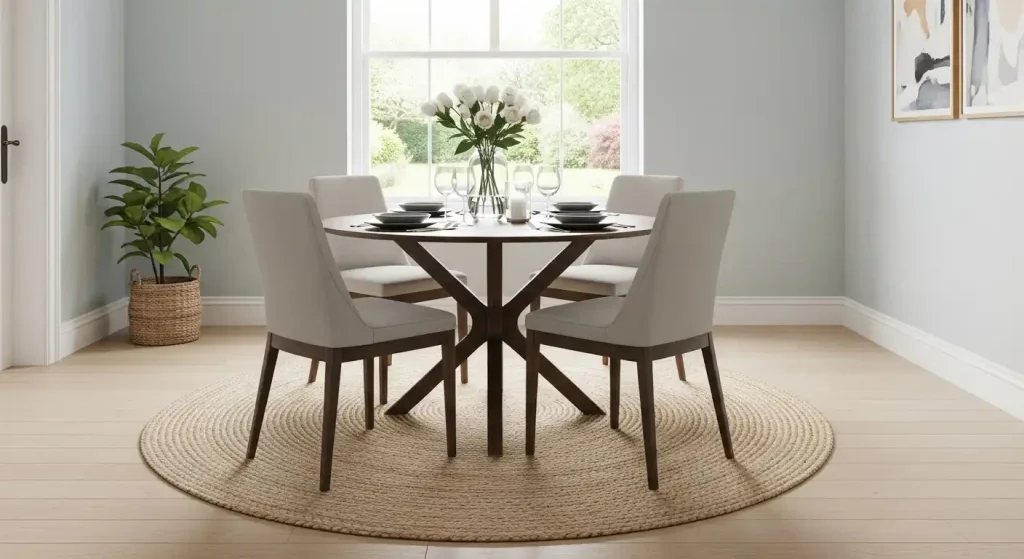
When you’re designing your dining space, the rug you choose can make a big difference in how the room looks and feels.
The question many homeowners ask is: are round rugs good for dining room setups, or should you stick to more traditional rectangular styles?
The truth is, round rugs can be a fantastic choice—if you know when and how to use them.
Christmas & Year-End Deals On Amazon !
Don’t miss out on the best discounts and top-rated products available right now!
*As an Amazon Associate, I earn from qualifying purchases.
They can bring warmth, balance, and style to your dining area while helping define the space.
In this guide, we’ll explore the benefits of round rugs, when they work best, and how to style them for different dining room layouts.
Why Round Rugs Work So Well
Round rugs have a natural ability to soften the harsh lines and angles of a room.
Their curves create a sense of flow and intimacy, which is especially appealing in spaces where people gather to share meals.
They also work beautifully with round dining tables, echoing the table’s shape and creating a harmonious visual effect.
This design choice can make the dining area feel more intentional and cohesive.
If you’re curious about pairing rugs with round tables, check out our detailed guide on rugs for round dining tables.
Perfect Match for Round Dining Tables
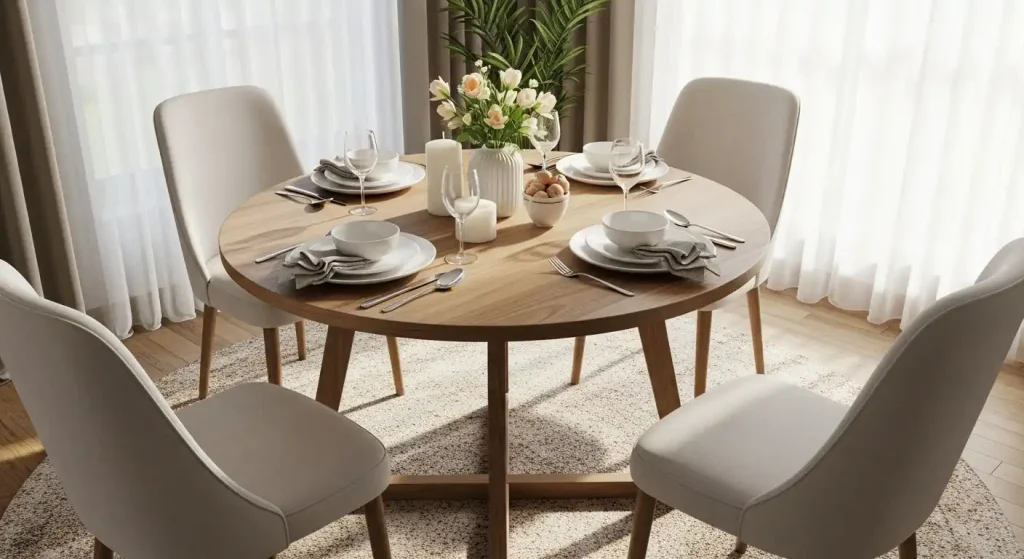
One of the most obvious—and effective—uses for a round rug is under a round dining table.
The mirrored shapes create symmetry, making the space feel balanced and inviting.
When placing a round rug under a round table, make sure it’s large enough for chairs to remain on the rug even when pulled out.
A good rule of thumb is to choose a rug that extends at least 24 inches beyond the edge of the table.
For more sizing tips, see our guide on how to choose an area rug for a dining table.
Enhancing Small Dining Rooms
In a small dining room, round rugs can be a game changer.
Their shape helps maximize floor space while avoiding the bulkiness of a large rectangular rug.
Christmas & Year-End Deals On Amazon !
Don’t miss out on the best discounts and top-rated products available right now!
*As an Amazon Associate, I earn from qualifying purchases.
Because they don’t have sharp corners, round rugs can make a compact space feel more open and easier to navigate.
They also work well in dining nooks or breakfast areas where space is at a premium.
For more ways to optimize compact spaces, explore our tips on how to make a small dining room look bigger.
Creating Flow in Open-Concept Layouts
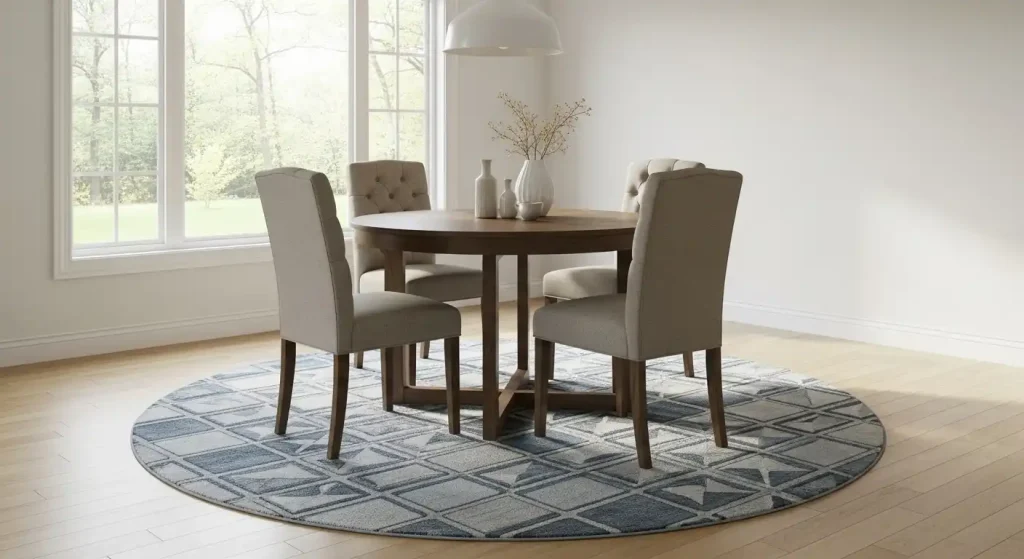
If your dining area is part of an open-concept design, a round rug can help define the dining zone without creating harsh boundaries.
The circular shape encourages movement and conversation, making the space feel more relaxed.
This works especially well when your dining table is positioned between the kitchen and living room.
The round rug visually anchors the table while maintaining a smooth flow between zones.
For more layout inspiration, see our article on open-concept dining area designs.
Style Versatility
Round rugs are not limited to one design style.
They can adapt to farmhouse, modern, boho, and even formal dining rooms.
- Farmhouse: Try a braided jute or sisal rug for a natural, rustic feel (farmhouse dining room ideas here).
- Modern: Opt for a bold geometric pattern or solid color to make a sleek statement (modern dining room ideas here).
- Boho: Layer a colorful round rug over a larger neutral base for an eclectic vibe (boho style dining room ideas here).
- Formal: Choose a rich Persian or Oriental design for elegance (formal dining room decorating tips here).
Choosing the Right Size
Size is everything when it comes to rugs under dining tables—especially round ones.
If the rug is too small, chairs will catch on the edges when pulled out, which is both uncomfortable and potentially damaging to the rug.
Christmas & Year-End Deals On Amazon !
Don’t miss out on the best discounts and top-rated products available right now!
*As an Amazon Associate, I earn from qualifying purchases.
Sizing tips for round rugs:
- Measure your table’s diameter.
- Add at least 48 inches to that number to allow for chair movement.
- Make sure all chair legs stay on the rug when seated and when pulled out.
If you’re unsure, it’s better to size up than risk a rug that feels cramped.
Material Matters
Because dining rooms are prone to spills, you’ll want a rug that’s easy to clean.
Flatweave and low-pile rugs are ideal because they don’t trap crumbs as easily as high-pile or shag styles.
Popular materials for round dining room rugs:
- Wool: Durable, naturally stain-resistant, and soft underfoot.
- Polypropylene: Affordable, stain-resistant, and easy to clean—great for families.
- Jute or Sisal: Adds texture and warmth; best for casual styles.
- Indoor-Outdoor Rugs: Perfect for messy eaters or pet-friendly homes.
For more on material choices, see our list of best dining rugs for different styles.
Color and Pattern Choices
The color and pattern of your rug can either make it the star of the room or let it blend seamlessly with your décor.
If you want the rug to stand out:
Choose bold colors or striking patterns that contrast with your table and flooring.
If you want a subtle look:
Opt for neutral tones that complement your dining room furniture.
Patterned rugs are also great for hiding stains, making them a practical choice for high-traffic dining rooms.
Christmas & Year-End Deals On Amazon !
Don’t miss out on the best discounts and top-rated products available right now!
*As an Amazon Associate, I earn from qualifying purchases.
Layering for Depth
Layering a smaller round rug over a larger rectangular or square rug can add depth and texture to your dining space.
This technique works well if you want to introduce a pop of color or pattern without committing to a large statement rug.
Layering also allows you to switch out the top rug seasonally for a fresh look.
For more ideas, check out our guide on seasonal dining table décor.
Lighting and Accessories
The right rug can set the stage for your dining room lighting and accessories.
A round rug under a round table pairs beautifully with a round chandelier or pendant light, creating a cohesive focal point.
You can enhance this look with a stylish centerpiece (modern dining table centerpiece ideas here) or complementary table linens (dining tablecloth ideas here).
When a Round Rug Might Not Be Ideal
While round rugs have many benefits, they’re not always the best choice.
If you have a long rectangular table, a round rug may leave chairs off the rug at the ends, which can feel awkward.
In that case, a rectangular rug is usually the better option.
Similarly, in very narrow dining spaces, a round rug might disrupt the flow of the room.
For these scenarios, explore our simple dining room ideas for alternative rug solutions.
Christmas & Year-End Deals On Amazon !
Don’t miss out on the best discounts and top-rated products available right now!
*As an Amazon Associate, I earn from qualifying purchases.
Budget and Quality
Round rugs come in a wide range of prices.
If your dining room sees a lot of activity, consider a mid-range rug that balances quality with practicality.
Save higher-end, delicate rugs for low-traffic areas where they won’t be exposed to frequent spills or chair movement.
13. Quick Tips for Success
Before you commit to a round rug, keep these tips in mind:
- Make sure it’s large enough for all chairs to stay on the rug.
- Choose a material that’s easy to clean.
- Coordinate the rug’s color and pattern with your dining room style.
- Use the rug to define the dining area in open layouts.
- Pair with round tables for the most harmonious look.
Final Thoughts
So, are round rugs good for dining room spaces?
Absolutely—when chosen and styled correctly, they can enhance the look, feel, and function of your dining area.
They’re especially effective with round tables, in small dining rooms, and in open-concept layouts where you want to create a defined yet inviting zone.
Whether your style is rustic farmhouse, sleek modern, or colorful boho, there’s a round rug that can elevate your dining experience.
For more inspiration, browse our guides on rugs for round dining tables, how to choose an area rug for a dining table, and creating a cozy dining space.

